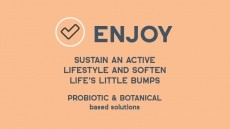UNICEF: Lowered vit A supplementation a knock-on effect of polio eradication success

In a report made available this week, the charity highlights the greater risk of illness, hearing loss, blindness and even death children in particular are facing as a result of a wind down in these services.
“The future of this low-cost, high-impact intervention hangs in the balance, and with it the survival, health and development of the most vulnerable children,” said Victor Aguayo, Chief of UNICEF’s global nutrition programme.
“This steep decline is an unprecedented situation and a cause for alarm, as it threatens to undermine decades of progress.”
The report outlines the scale of reduced coverage these vitamin A supplementation (VAS) programmes cover in which 26 countries faced a shortage that left 61 million children missing these supplements in 2016 - triple the number recorded in 2015.
The worst affected region is West and Central Africa, where coverage went down from 78-90% between 2009 and 2015, to 79% in 2015 and 54% in 2016.
UNICEF point to the success of polio immunisation campaigns that have all but eradicated the disease in these regions.
The delivery of vitamin A supplements have traditionally been carried out along with these campaigns but has suffered as polio infrastructure and funding has dwindled.
Delivery options 'challenging'
“Between 2000 and 2005, polio Supplementary Immunization Activities (SIAs) were one of the only VAS distribution mechanisms used in West and Central Africa, but as this platform initially phased out in the mid-2000s, planning and funding for Child Health Events helped fill the gap,” the report said.
“As efforts to eradicate polio re-intensified in this region, SIAs gained renewed prominence for VAS distribution between 2009 and 2015 but then drastically decreased again in 2016 as eradication efforts near completion.
“While stakeholders knew this platform would disappear, along with its financing, planning for other delivery options was challenging in many settings. This is because the presence of polio SIAs, despite their many benefits, tends to disrupt planning for the more routine services into which VAS could be integrated.”
Further headaches for aid agencies working in the most affected countries include fragile health systems already under strain from delivering life-saving services to immunise children, promote nutrition and prevent malaria.
Solutions and suggestions
The report also suggests how best to tailor the delivery of these health challenges to meet the children’s needs with an emphasis on making the most of each contact.
In determining the types of interventions most frequently delivered alongside VAS during Child Health Events and polio SIAs, field data confirmed these events consistently delivered on VAS and messages on breastfeeding and complementary feeding.
The report called for the expansion of support for breastfeeding in the child’s first two years.
“Commit to improving diets – VAS saves lives in the face of vitamin A deficiency; but it does not impact vitamin A status in the long term.
“Protecting, promoting and supporting breastfeeding in the first two years of life, improving the quality of complementary foods, feeding and hygiene practices, diversifying diets and reducing infections must therefore remain a priority so that vitamin A deficiency can be sustainably eliminated.
“Until then, VAS programmes and efforts to improve nutrition must go hand in hand.”
In a series of recommendations, the report called for greater commitment from national governments and their development partners to reach every child with a vitamin A dose, twice per year.
Among other actions, the report also wanted to see the tracking of every child, through better use of child health cards and booklets to know which children receive two vitamin A supplements yearly for full protection.















